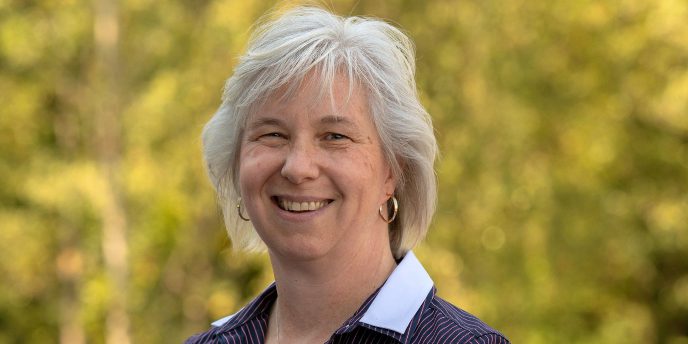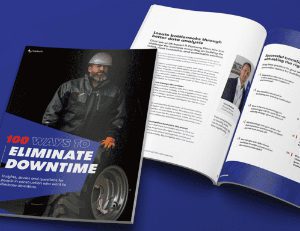

Legislation in both the US and Canada enshrines the basic principles of equal opportunity to which the vast majority aspire. Gender, race, sexual orientation, age and a whole host of other potentially prejudicial elements to the recruitment process are strictly prohibited.
Despite that, the dice still seem to be firmly loaded in favor of men, especially white, middle-aged men. According to US career experts Zippia in February 2023, there were 767,992 construction workers in the US. Of those, just 6.2% were women.
It seems unlikely that wage differentials are the answer. The same research says women earn 94% of what their male colleagues take home which, while not equal, compares favorably with the gender pay gap across all industries at 82%, according to the Pew Research Center.
In relative terms then, construction should be attractive. And yet the figures demonstrate that it isn’t. That construction sites are loud, dirty, noisy and occasionally dangerous places with a premium still placed on physical power is indisputable, but the growing digitalization of the industry ought to balance that off as it is opening up a world of opportunity that places much more emphasis on brain than brawn.
It’s certainly something Maria Boyer, the vice-president of Preconstruction Services at Seattle-based MacDonald Miller, has wrestled with.
“Diversity is a journey,” she says. “It’s not the flip of a switch. It’s a hard road, and it’s a commitment that we all have to make to ensure we look like the communities in which we live and in which we serve.”

Indeed, Boyer’s commitment is largely borne out of personal experience having fallen into the industry in the 1990s and then landing a role as MacDonald Miller’s lone female project manager on construction sites.
Fast forward to 2023 and one of Boyer’s remits at MacDonald Miller is to build and develop the company’s supply and subcontractor diversity program. She’s seen a lot change.
“On the operational side of the house, from a construction management perspective, we have much greater diversity from when I started in the industry over 30 years ago,” says Boyer. “I’m involved in MCA Western Washington where I am a director on the MCAWW board of directors, and I also serve as the chair of their board of education that develops and delivers educational programs for its members.”
“Diversity is a journey. It’s not the flip of a switch. It’s a hard road, and it’s a commitment that we all have to make to ensure we look like the communities in which we live and in which we serve.”
That program has been in place 24 years and, says Boyer, change has been dramatic. “We’ve seen classes in the early years comprised of all males with a few females along the way to now seeing nearly a 50/50 split in many of the courses delivered. That shows that our next generation is more diverse, but there are pockets where we have more work to do. We are not there yet.”
Indeed, only 8% of women in the US are in management positions and changing this, says Boyer, is critical.
“In terms of recruiting, being able to see women and minorities in different positions enables companies and different departments to enforce the old idea that ‘if you can see it, you can be it’,” she says.
“You see less diversity as you go up over the higher ranks and different generations. That is changing ever so slowly.”
“You see less diversity as you go up through the higher ranks and different generations,” adds Boyer. “That is changing ever so slowly. All of those elements are important in moving the needle forward to impact a lasting change of sustained diversity in the construction industry.”
It’s a view that diversity champion Jennifer Todd expanded upon when she spoke to Trackunit earlier this year. Todd, founder and president of LMS General Contractors, has risen through the ranks of construction over the last 20 years to become a figurehead for diversity.
“Our perspectives are shaped upon our beliefs, those beliefs stem from our experiences. Leaders at work must be mindful of unconscious bias, or the blinders that we each have,” she says. “We all suffer from unconscious bias at work, or blinders that we wear. Due to unconscious bias, workplace culture, as well as who gets hired and promoted, are affected. The benefits of diversity at work should be embraced.”
Todd says a proper diversity strategy is not only fairer, it also in the long run gives businesses a stronger likelihood of success. The US labor market is in short supply and an expected 1 million workers will be required in construction by 2025.

“The labor shortage has impacted all construction trades,” says Todd, who has thrived despite her gender and the color of her skin. “The infrastructure bill passed, but the industry lacks the infrastructure of people to perform the work. It is impossible to discuss workforce without mentioning DEI.”
Todd advocates tapping into the 140 million-strong Gen Z group and has for that purpose set up the nonprofit ‘A Greener Tomorrow’ offering construction apprenticeships to minorities and women across the US with classroom and on-site training part of the curriculum. And for those who dismiss this as ‘drop-in-the-ocean’ stuff, A Greener Tomorrow has helped place 85% of its female graduates in construction.
It’s something Boyer also sees where women bring their skills from the classroom or other industries to the table. “There is a lot of transferrable skills,” she says. “That’s how we are looking at how we bridge the gap in some of those other positions that lack diversity in construction.”
But if that’s a snapshot south of the border, is it different in Canada? This is the country with two official languages after all, and where the 2.7 million population of its largest city Toronto population was 47% made up of immigrants in 2021, according to the local department of public health.
Molly Hayes of The Globe and Mail recently published an article titled “Construction industry faces reckoning over racism on job sites,” depicting difficult conditions non-white construction workers face.
“It is difficult to get a true picture of racial diversity in the construction industry in Toronto, or across the province, because of a lack of data,” Hayes wrote. “However, industry stakeholders say racialized and marginalized people have been largely left out of this economy and that those who do penetrate the sector are more often clustered at the bottom, in the less-desirable positions or trades.”
From his vantage point in British Columbia, Steffan Waite is not inclined to agree, at least in the sense that there is plenty of work in the industry for immigrants.
“There’s no lack of immigrants in Canada willing to work in the construction industry,” says Vancouver-based Waite. “I don’t see people judging on race and skin color because people are just glad to see people showing up to get the job done.”

Even more pertinent, he says, are the local labor shortages which mirror its neighbor south of the border and there is a constant scouring of the market for people with the right skills. But making your company attractive to potential employees is critical.
“Diversity is a business necessity,” says Waite, VP of Research at Pennsylvania-headquartered Tech-Clarity. “To survive, you have to hire from a diverse perspective, and your inner soul needs to be comfortable with diversity.
“Every business depends on humans, and the construction industry depends on humans working on site and within offices overseeing construction,” he says. “Mentally and subconsciously, your belief system needs to be orientated to not seeing any race or gender differences but to hire based on experience and merit.”
“There’s no lack of immigrants in Canada willing to work in the construction industry. I don’t see people judging on race and skin color because people are just glad to see people showing up to get the job done.”
But Waite says construction has work to do on addressing gender and suggests even simple action like making sure there is running water on construction sites has already started to make a difference to the attractiveness of the job.
That, he says, is making for a dynamic in Canada that should ultimately serve the industry well as common sense and good business combine with the natural make up of the Canadian population to ensure jobs in construction become more attractive to people of diverse backgrounds.
While women are yet to be represented in construction that’s reflective of the population, opportunities for women, suggests Waite, are growing and that trend should only strengthen.

Never miss an insight. We’ll email you when new articles are published on this topic.
